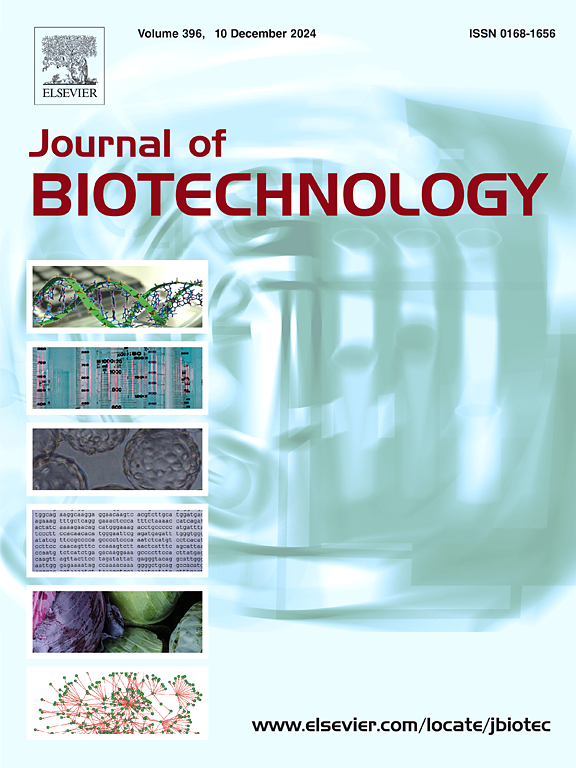新型向日葵GDSL脂肪酶/酯酶对绿原酸的水解研究。
IF 3.9
2区 生物学
Q2 BIOTECHNOLOGY & APPLIED MICROBIOLOGY
引用次数: 0
摘要
GDSL酯酶/脂肪酶是一组具有广泛底物特异性的水解酶。然而,目前还没有报道这些化合物能催化水解植物关键代谢物绿原酸(CGA)。迄今为止,所有已知的cga水解酶都已在微生物中鉴定,属于经典酯酶家族。在这项研究中,我们报道了一种新的来自向日葵(Helianthus annuus)的gdsl型酶HaCAE的鉴定和表征,该酶具有强大的cga水解活性。HaCAE在重组毕赤酵母中成功表达和分泌。采用体外酶法测定HaCAE的动力学参数。全细胞生物催化表现出显著的酶促效率,在24小时内水解17.31mM的CGA。在硅分析提供了深入了解酶的催化机制和底物选择性。据我们所知,HaCAE是第一个植物衍生的cga水解酶。其高催化活性强调了其在食品加工应用中的潜力,旨在降低CGA含量,并为植物中CGA代谢提供了有价值的生化见解。本文章由计算机程序翻译,如有差异,请以英文原文为准。
Hydrolysis of chlorogenic acid by a novel GDSL lipase/esterase from sunflower
GDSL esterases/lipases are a diverse group of hydrolytic enzymes with broad substrate specificity. However, none of them have been reported to catalyze the hydrolysis of chlorogenic acid (CGA), a key plant metabolite. To date, all known CGA-hydrolyzing enzymes have been identified in microorganisms and belong to the classical esterase family. In this study, we report the identification and characterization of a novel GDSL-type enzyme HaCAE from Helianthus annuus (sunflower), which exhibits robust CGA-hydrolyzing activity. HaCAE was successfully expressed and secreted in recombinant Pichia pastoris. The kinetic parameters of HaCAE were determined through an in vitro enzyme assay. Whole-cell biocatalysis demonstrated remarkable enzymatic efficiency, achieving hydrolysis of 17.31 mM of CGA within 24 h. In silico analysis provided insights into the enzyme’s catalytic mechanism and substrate selectivity. To the best of our knowledge, HaCAE is the first plant-derived CGA-hydrolyzing enzyme. Its high catalytic activity underscores its potential for food processing applications aimed at reducing CGA content and offers valuable biochemical insights into CGA metabolism in plants.
求助全文
通过发布文献求助,成功后即可免费获取论文全文。
去求助
来源期刊

Journal of biotechnology
工程技术-生物工程与应用微生物
CiteScore
8.90
自引率
2.40%
发文量
190
审稿时长
45 days
期刊介绍:
The Journal of Biotechnology has an open access mirror journal, the Journal of Biotechnology: X, sharing the same aims and scope, editorial team, submission system and rigorous peer review.
The Journal provides a medium for the rapid publication of both full-length articles and short communications on novel and innovative aspects of biotechnology. The Journal will accept papers ranging from genetic or molecular biological positions to those covering biochemical, chemical or bioprocess engineering aspects as well as computer application of new software concepts, provided that in each case the material is directly relevant to biotechnological systems. Papers presenting information of a multidisciplinary nature that would not be suitable for publication in a journal devoted to a single discipline, are particularly welcome.
 求助内容:
求助内容: 应助结果提醒方式:
应助结果提醒方式:


